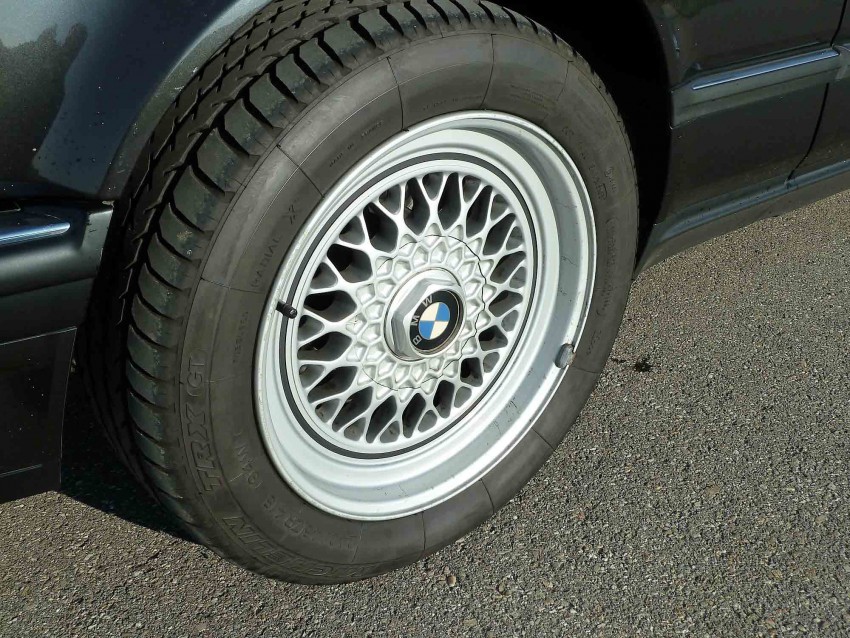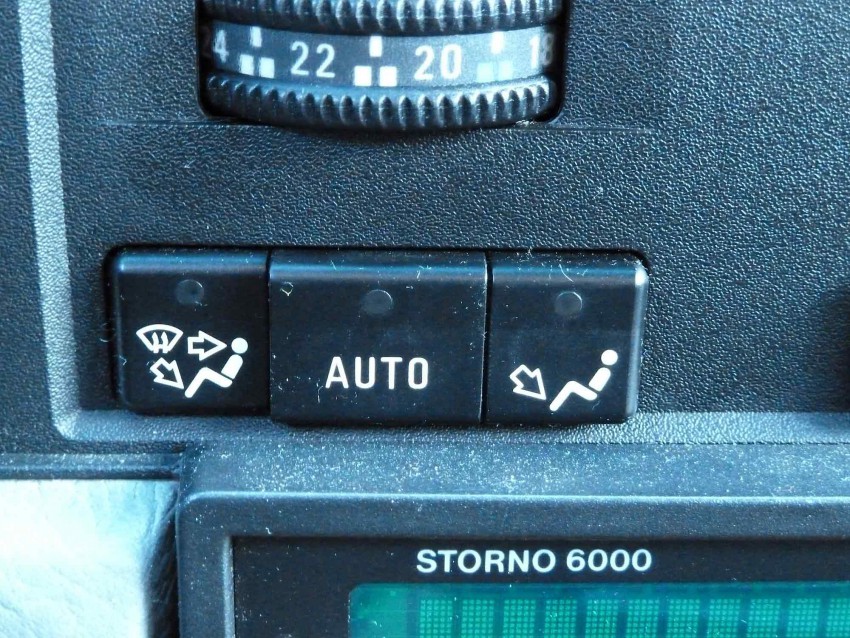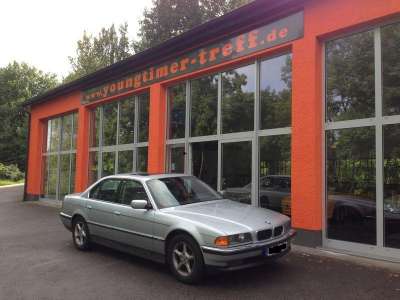BMW 750i built in 1988
Our test sample dates from 1988 and is well equipped, but far from what was possible back then. Our Bavarian has electric windows at the front and rear, full leather equipment and automatic dual-zone air conditioning on board, as well as cruise control – er, sorry, of course it was called cruise control back then – and an on-board computer. And almost 145,000 kilometers on the clock. The seven is 491 cm long – which creates space for the passengers. One might think. The powerful engine in the front needs space, and there is also a not modest trunk with a volume of 500 liters. Oh yes, there also had to be room for the 102 liter tank. Well – there’s not much left for the passengers.

You don’t sit in the back of a 7 Series – you drive it
At least if you compare the space available with today’s vehicles. There are good seats and plenty of legroom at the front, and the seats at the back are also good – albeit lined with somewhat slippery leather – but the knee room is modest. In contrast, today you feel like you’re in a gym in the back of a Skoda Superb. But you don’t sit in the back of a 7 Series – you drive it. Especially when the huge 12mm is installed. One turn of the ignition key – the starter starts working and the drive unit, known internally as M70B50, comes to life. And how! A bright, alert sound awaits the 7 Series owner.

Now we also ask the automatic system to work
The car starts moving spontaneously, much more spontaneously than, for example, the Jaguar XJ from that time. In general, the BMW looks pretty sporty from the first few meters. There’s nothing palanquin-like about the suspension, although the suspension comfort isn’t bad even by today’s standards. Once the 7.5 liters of engine oil are warm, you can give the BMW its spurs – the silky-smooth engine, each with an overhead camshaft, has nothing against it. It revs up very lightly and accelerates the car, which weighs a good 1,850 kg, quickly. BMW quotes 7.4 seconds for the sprint from standstill to 100 km/h. Theoretically, the 750i is good for 272 km/h, but is electronically limited at 250 km/h. So it’s possible if you want to drive the E32 sporty, but you also have to be aware of a certain consumption. There are said to be people who drive from the Bern area to Ticino with an average consumption of 10 liters.


